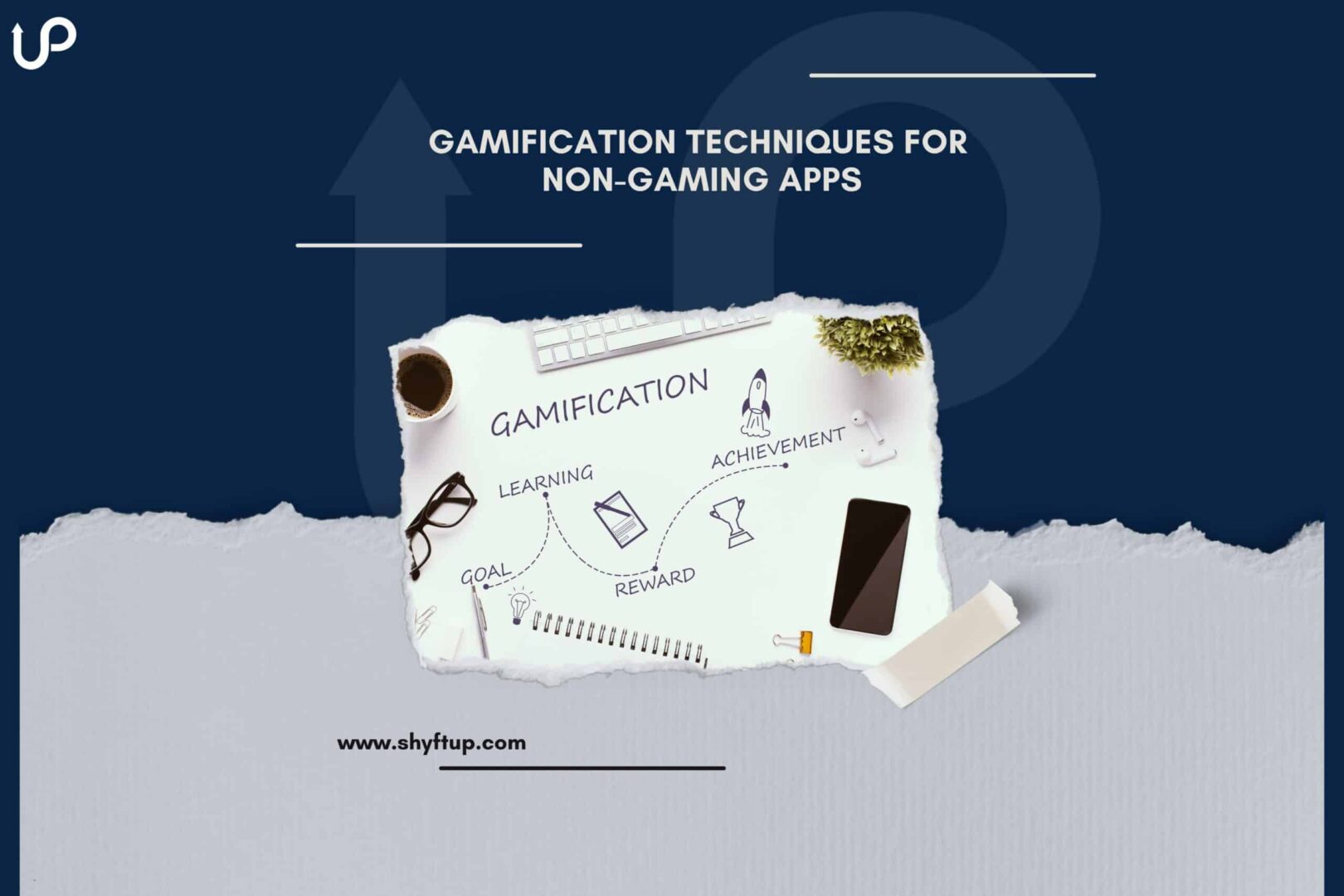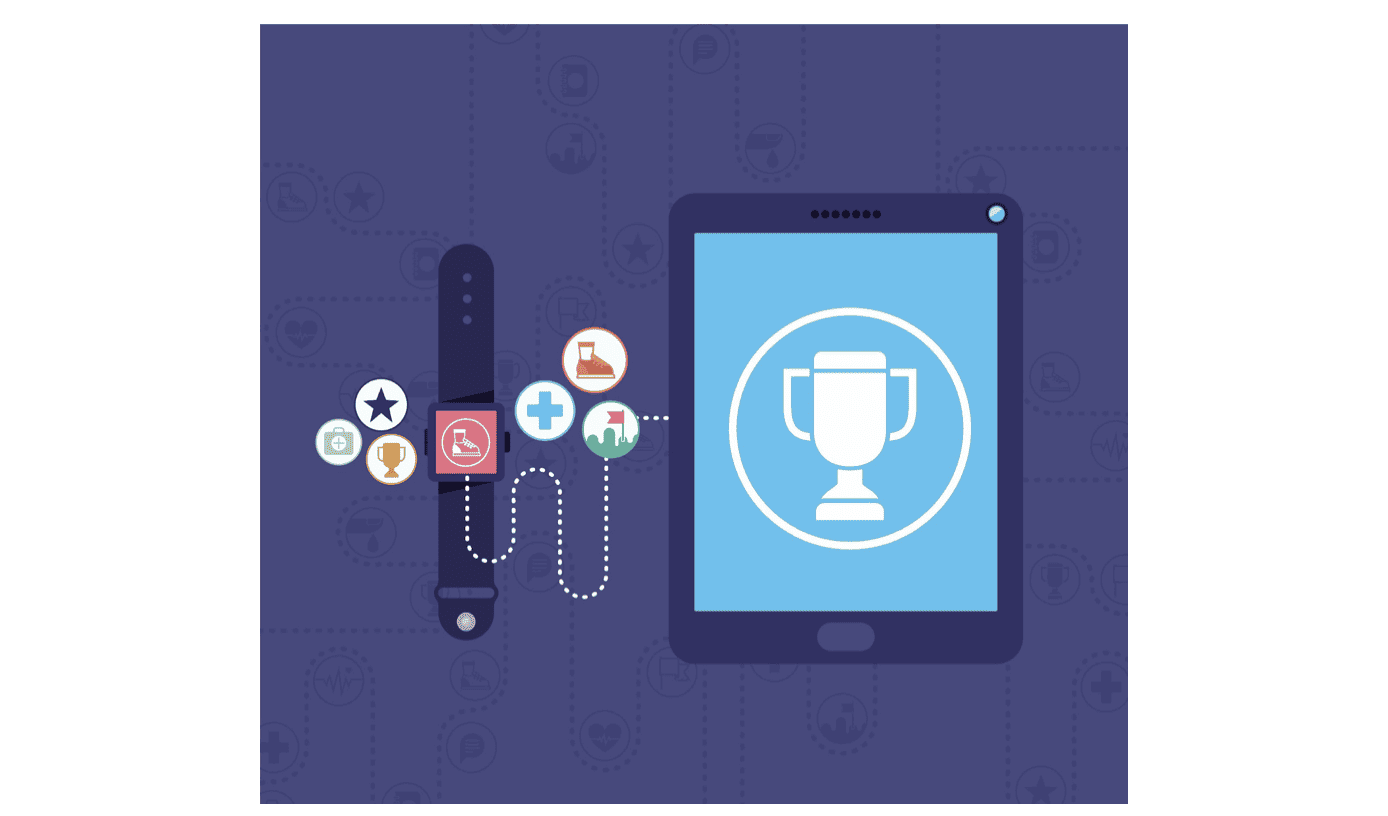
Gamification Techniques for Non-Gaming Apps
Do you have a non-gaming app? Are you having trouble increasing user retention, engagement, and conversion? If yes, then you should gamify your app. However, you might ask, “How can I gamify my app when it is primarily a game? That’s exactly what you learn today. In this post, we will share some of the best gamification techniques that will dramatically improve your app’s user experience!
What is Gamification in Mobile Apps?
Gamification in mobile apps is the strategic integration of game-like elements and dynamics to enhance user engagement and retention. Drawing inspiration from the familiar concept of making learning fun, gamification employs techniques like points, badges, levels, challenges, and rewards to transform routine interactions into compelling and enjoyable experiences.
What are the Benefits of Gamification in Mobile Apps?
Adding game-like elements to your non-gaming app is not merely about capturing attention momentarily but strives to create a sustained and captivating user journey. By infusing elements of competition, progression, and personalization, gamification turns mobile apps into engaging adventures, making user interactions more exciting and fostering a sense of accomplishment. Whether in the classroom or the digital realm, the essence of gamification lies in making the user experience enjoyable, motivating, and, ultimately, memorable.
How can Gamification Boost User Engagement in Non-Gaming Apps?
Gamification can significantly boost user engagement in non-gaming apps by leveraging psychological and motivational principles commonly found in games. Here’s how gamification achieves this:
- Increased Motivation: Gamifying your app can motivate your users to use your app even more by making activities inherently enjoyable. Points, badges, and rewards provide a sense of accomplishment, fostering a desire to engage with the app. Moreover, gamification gives users a sense of achievement as they progress through levels or unlock new features. This progression serves as a visual representation of their accomplishments, motivating them to continue engaging with the app.
- Promote Social Interactions: One of the ways to gamify your app is by adding leaderboards. Introducing friendly competition through leaderboards encourages users to outperform others, fostering not just a sense of achievement but also social interaction. Not only that, but when you encourage social sharing, users can share their achievements on social media, creating a social aspect of the app and potentially attracting new users.
- Allow App Personalization: Allowing users to personalize their profiles or in-app environments creates a sense of ownership. Users are more likely to engage consistently when they feel a personal connection to the app.
- Achieving Goals: Setting clear challenges or quests gives users specific goals to achieve. The pursuit of these goals keeps users engaged and motivated.
- Storytelling: Incorporating narratives into the app enhances the overall user experience. Users become part of a story, making interactions more meaningful and enjoyable.
Gamification enhances user engagement in non-gaming apps by tapping into motivational triggers, fostering a sense of achievement, encouraging competition and social interaction, and providing a more enjoyable and personalized user experience. When implemented thoughtfully, gamification strategies can significantly contribute to the success of non-gaming applications.
10 Gamification Techniques for Non-Gaming Apps
Now that you know the gamification of non-gaming apps and its benefits, it’s time to actually learn how to gamify your app. To learn more, it is crucial to be familiar with the most common and effective gamification techniques most apps are using today. Here are some of them:
Points and Rewards
The “Points and Rewards” gamification technique transforms user engagement within mobile apps by assigning points for completing tasks or activities. These points act as a measurable representation of a user’s progress and engagement level, creating a sense of accomplishment and competition.
As users accumulate points, they gain access to a variety of rewards, ranging from in-app currency and virtual goods to exclusive content or real-world incentives. This system strategically taps into behavioral psychology, motivating users to perform desired actions by associating them with tangible benefits.
Badges and Achievements
Badges and achievements in mobile apps aren’t just digital symbols; they’re personal milestones that users can cherish on their app journey. These visual representations of accomplishments add a delightful layer of achievement, sparking a sense of pride and joy.
When users earn a badge, they receive a tangible celebration of their dedication, progress, and mastery within the app. It’s like receiving a well-deserved pat on the back, encouraging users to set and conquer new goals.
The pursuit of badges transforms the user experience from routine tasks to meaningful, goal-oriented adventures, creating a positive cycle of engagement. As users proudly showcase their badges, there’s a shared sense of accomplishment within the app’s community, fostering connections and friendly competition.
Levels and Progression
“Levels and Progression” in gamification transforms the user journey into an emotionally rewarding adventure. Picture it as a series of personalized chapters, each unlocking new features and challenges tailored to your pace and preferences. As users ascend through these levels, the app becomes a companion on their unique exploration, offering a sense of accomplishment with every milestone reached.
The excitement lies not just in the journey itself but in the anticipation of discovering what’s next, fostering a deep connection between you and the app. This structured progression not only motivates users’ curiosity but ensures that each interaction is purposeful, creating a positive and engaging experience that resonates on a personal level.
Challenges and Quests
A lot of people love challenges and quests. These things could dramatically engage your users as they infuse your app with a sense of adventure and purpose. Imagine navigating an app not just as a user but as an explorer on a captivating journey.
Challenges set specific, achievable goals, while quests unfold a narrative, creating a storyline that turns routine interactions into a meaningful adventure. Your users will truly enjoy your app event more as they overcome obstacles and gain a sense of accomplishment that comes with each completed task.
As a non-gaming app with gamification, challenges and quests serve as opportunities for growth and discovery. You can just imagine the excitement as users embark on a quest, each step forward unlocking a new chapter of the app’s story.
Leaderboards
Leaderboards are a dynamic gamification feature that breathes life into user interaction within mobile apps. By fostering friendly competition, leaderboards serve as a visual representation of user performance. Users can see how they stack up against others, whether in points earned, levels achieved, or other app-related activities.
The competitive edge of leaderboards not only motivates users to outperform each other but also creates a sense of achievement. Attaining a coveted position becomes a source of pride, encouraging users to invest more time and effort in the app.
Beyond competition, leaderboards contribute to the formation of a community. Users recognize familiar names, avatars, and accomplishments, fostering a social dimension within the app. This shared experience encourages interaction, collaboration, and friendly banter among users.
Personalization
Personalization in gamification is like offering users a paintbrush to add their unique strokes to the canvas of their app experience. By allowing users to personalize their profiles, avatars, and in-app environments, you’re not just giving them customization options; you’re handing them a key to a realm where their preferences and identities shine.
When users can choose their profile details, dress up avatars in a way that resonates with them, and even tailor the overall look and feel of the app, a profound sense of ownership and connection blossoms in the users.
Adding friends
Do you know that great feeling of truly achieving something, and you have this strong urge to share it with friends? You can take advantage of that and turn it into a game in your app. A lot of people love to share their accomplishments with their friends and other people.
With this in mind, Incorporate a feature that facilitates user interaction within your app by enabling users to connect with each other. Allow users to add friends via email or social media. Your app becomes a platform for shared experiences. Beyond enhancing user engagement, this technique possesses the potential to generate substantial organic downloads. A satisfied and engaged user base can organically amplify the reach of your app as they enthusiastically share their positive experiences, becoming champions of your brand.
Are There Risks to Over-Gamifying an App’s User Experience?
Imagine an app experience where every click and every interaction is laden with game-like challenges and rewards. While the idea is to make the user journey thrilling, there’s a fine line. Over-gamifying an app, like showering confetti at every turn, might unintentionally overwhelm users, leaving them fatigued instead of energized. It’s like having too many toppings on your favorite dessert; the sweetness turns into a cacophony of flavors, diluting the joy.
In the quest to infuse joy and engagement, it’s crucial to remember that users are seeking meaningful connections with apps. Too much gamification risks turning this digital journey into a flashy but shallow experience. Just as in real-life interactions, subtlety and balance are key.
By understanding the nuances of user preferences, aligning gamification with the app’s essence, and maintaining a human-centric approach, you can create an experience that feels like a friendly guide rather than an overwhelming game show. It’s about crafting an experience that resonates, motivates, and delights, ensuring that users not only stay engaged but genuinely enjoy the journey.
Crafting a User-Centric Journey
Embarking on the gamification journey for non-gaming apps is a quest to craft deeply engaging and meaningful user experiences. From grasping the foundations of gamification to exploring its benefits, the integration of elements like points, badges, and personalization becomes a language that resonates with users’ innate desires for achievement and connection.
There is more to discover about gamification techniques, and you can delve into them by connecting with ShyftUp. With their expertise and years of experience, they can significantly enhance your app. Beyond that, they specialize in boosting your app’s visibility in app stores, further contributing to your app’s success. Give them a try and book a demo today!
